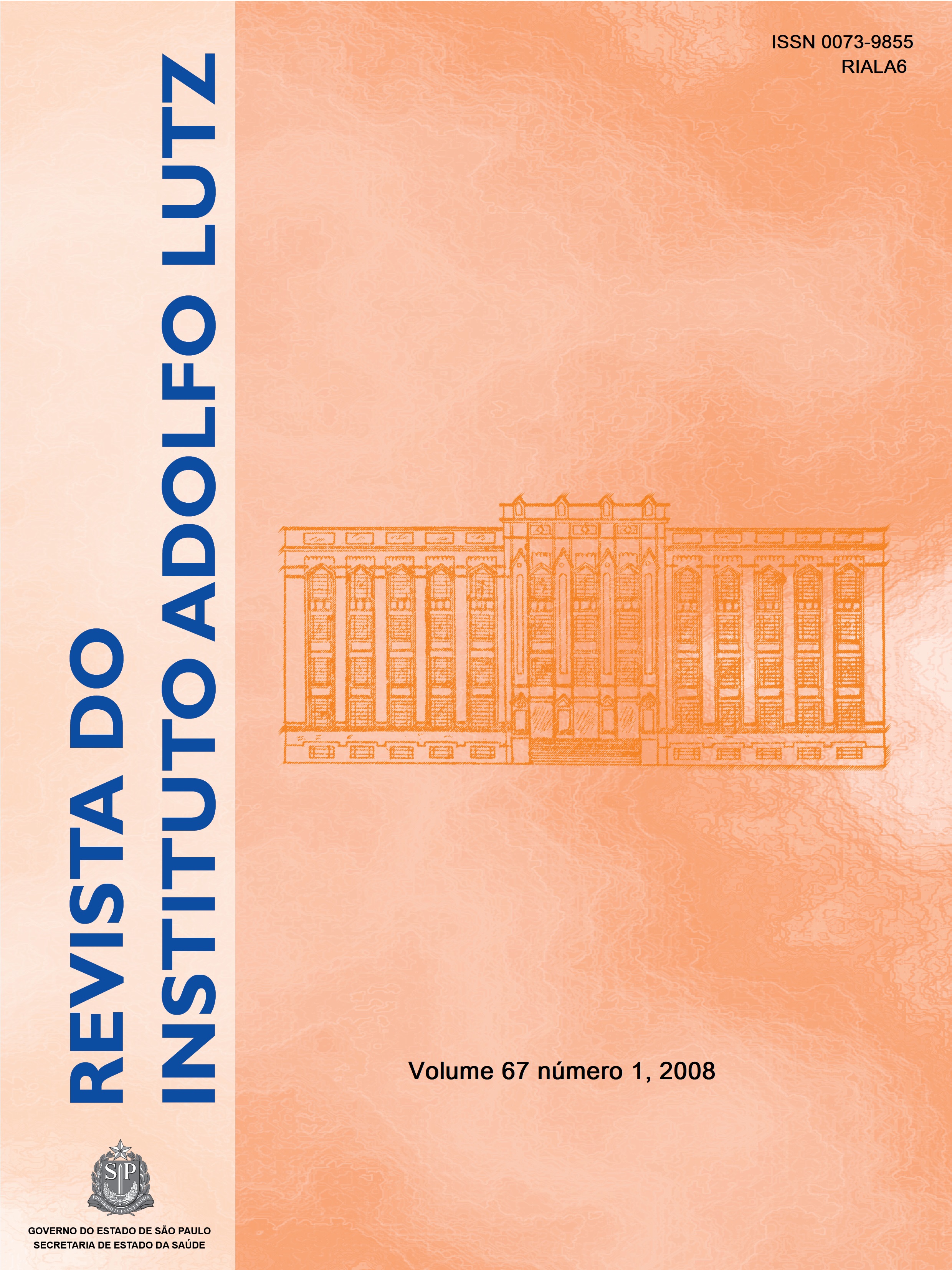Resumen
No estado de São Paulo, Brasil, em função da eficiente estratégia para a vigilância do vírus do sarampo (VS), não houve registro de casos nativos de sarampo no período de 2001 a 2007. No estado de São Paulo foram registrados casos de sarampo importados, sendo 01 paciente em 2001, outro em 2002 e em 2005 foi alvo de investigação uma criança não vacinada, de 18 meses de idade com exantema e febre, que foi admitida em hospital privado. O Centro de Vigilância Epidemiológica descobriu que o irmão desta criança teve uma doença semelhante uma semana antes. A infecção pelo vírus do sarampo foi confirmada no Instituto Adolfo Lutz pela detecção de anticorpo IgM anti-VS, isolamento do vírus por meio de cultivo em células Vero/hSLAM e amplificação de RNA viral por RT-PCR. A região do gene da nucleoproteína do vírus isolado foi amplificada. O resultado da análise filogênica mostrou que o vírus isolado correspondeu ao genótipo D5. Este genótipo circula no continente da Ásia e há relatos sobre sua anterior circulação em São Paulo.Citas
1. Dietz V, Rota J, Izurieta H, Carrasco P, Bellini W. Laboratoryconfirmation of suspected measles in settings of low measles transmission: conclusions from the experience in theAmericas. Bull World Health Organiz 2004; 82:11.
2. Muller CP, Kremer JR, Best JM, Dourado I, Triki H, Reef S etal. Reducing global disease burden of measles and rubella:Figure 1. Phylogenetic analysis of 243nt of nucleoprotein geneof Measles Virus (MV) isolates circulating in São Paulo, Brazil.MV clustered in eigth genotypes: A, C2, D3, D4, D5, D6, D8,H1. Numbers refer to strains in Table 1. Report of the WHO steering Committee on research relatedto measles and rubella vaccines and vaccination, 2005.Vaccine 2007; 25: 1-9.
3. Gioula G, Papa A, Exindari M, Melidou A, Chatzidimitriou D, Karabaxoglou D et al. Greek measles epidemic strain, 2005-2006. Epidemiol Infect 2006; 12: 1-4.
4. Siedler A, Tischer A, Mankertz A, Santibanez S. Twooutbreaks of measles in Germny 2005. Euro surveillance 2006; 11: 131-4.
5. Chironna M, Prato R, Sallustio A, Martinelli D, Germinario C, Lopalco P et al. Genetic characterization of measles virusstrains isolated during an epidemic cluster in Puglia, Italy 2006-2007. Virol J 2007; 21: 4:90.
6. Mulders MN, Truong AT, Muller CP. Monitoring of measles elimination using molecular epidemiology. Vaccine 2001; 19:2245-9.
7. Rota PA, Liffick SL, Rota JS, Redd S, Papania M, Bellini WJ. Molecular epidemiology of measles viruses in the UnitedStates, 1997-2001. Emerg Infec Dis 2002; 8: 902-8.
8. World Health Organization. Weekly Epidemiol Record. Global distribution of measles and rubella genotypes update. 2006;81:474-9.
9. Riddell MA, Rota JS, Rota PA. Review of the temporal andgeographical distribution of measles virus genotype in theprevaccine and postvaccine eras. Virol J 2005; 87: 1-9.
10. Barros AFR, Segatto TC, Luna E, Darnovaro-Holliday MC,Vicari A et al. Measles transmission during commercial airtravel in Brazil. J Clin Virol 2006; 36: 235-6.
11. Ono N, Tatsuo H, Hidaka Y, Aoki T, Minagawa H, Yanagi Y.Measles viruses on throat swabs from measles patients usesignaling lymphocytic activation molecule (CDw150) but not CD46 as a cellular receptor. J Virol 2001; 75: 4399-401.
12. Ronveaux O, Rickert D, Hadler S, Groom H, Lloyd J, Bchir Aet al. The immunization data quality audit: verifying thequality and consistency of immunization monitoring systems. Bull World Health Organ 2005; 83: 503-10.
13. Liffick S, Thoung N, Xu W, Li Y, Lien HP, Bellini WJ, Rota PA.Genetic characterization of contemporary wild-type measles viruses from Vietnam and the people ́s Pepublic of Chine: identification of two genotypes within clade H1. Virus Res2001; 77: 81-7.
14. Prevots DR, Parise MS, Segatto CV, Siqueira MM, Santos ED, Ganter B et al. Interruption of measles transmission in Brazil, 2000-2001. J Infect Dis 2003; 187: S111-20.
15. Oliveira MI, Curti SP, Figueiredo CA, Afonso AMS, Sallum MAM, Durigon EL. Molecular analysis of a measles virusisolate from Brazil: a case originating in Japan. Acta Virol2004; 48: 9-14.

Esta obra está bajo una licencia internacional Creative Commons Atribución 4.0.
Derechos de autor 2008 Revista del Instituto Adolfo Lutz
